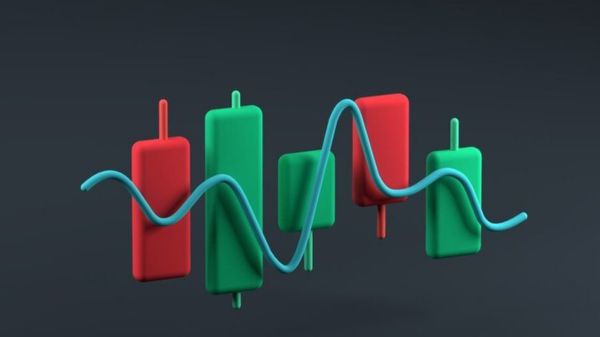Among the asset classes considered safe havens (such as gold, stocks, real estate, etc.), Cryptocurrency is one whose value has erratic fluctuations with sometimes amplitudes beyond imagination. However, there are secrets that, once mastered, anyone can become an expert trader to avoid "go big or go home" situations. It is the Cryptocurrency Analysis method.
Table of Contents
What is the Cryptocurrency Analysis?
What is the Cryptocurrency Analysis? Buying and selling volatile assets like cryptocurrencies requires some skill. Choosing a reasonable strategy, deeply understanding trading, and mastering analytical methods are practices that require a process of learning and gaining experience.
In particular, the cryptocurrency analysis method is the set of principles to observe the activity of a specific token on the market, considering signals from subjective (the token itself) to objective (the general market factors). From there, conclusions can be drawn in the form of predictions about where the value of that token may go.
Mastering cryptocurrency analysis methods allows traders to decide the exact moment to buy or sell, as well as provide a psychological shield from being carried away by FOMO.
There are quite a few ways to analyze cryptocurrencies. The scope of this article deals with three popular methods that are highly appreciated by traders: fundamental, technical, and on-chain analysis.

Fundamental analysis of cryptocurrency
Define
Fundamental analysis is a method that uses a mix of both quantitative financial metrics and qualitative measures based on all the information available about a specific token. In essence, this analysis aims to determine the intrinsic value of that token.
How to analyze?
After determining the token's intrinsic value, traders will compare that fundamental value to the current market price, thereby answering the question of whether this crypto asset is either undervalued or overvalued.
An undervalued asset can represent a buying opportunity, while an overvalued asset can signal it’s time to take profits.
Key information
- Market cap
- Volume
- Tokenomics
- Total value locked
- Roadmap
- Team members
- Community size and engagement
- Rate of network growth
- Rate of adoption
- Whitepaper
- Use case
Technical analysis for cryptocurrency
Define
Technical analysis is a method to determine which way the market is likely to move next by looking at past price movements in an attempt. Based on a number of statistical indicators and patterns, this method determines the probability of each scenario.
How to analyze?
Usually, traders use technical analysis to rely heavily on visual charts to help identify key signals, such as support and resistance. While they use statistical metrics, ultimately, technical analysis is used to find buy and sell signals.
When using technical analysis, traders must remember that they never expect always to be right. In fact, a trader that’s only correct 55% of the time can still be incredibly profitable. Besides, any trader needs to equip themselves with a risk management handbook. When the market moves contrary to what their indicators predicted, they use risk management practices, such as setting automatic sales and investing only a portion of their holdings in a single trade.
Key tools
Popular tools of fundamental analysis:
- Moving average convergence divergence (MACD)
- Relative Strength Index (RSI)
- Bitcoin price Simple Moving average (SMA)
- Moving Average (50,200) Crossover
- On-balance volume (OBV)

On-chain analysis for cryptocurrency
Define
On-chain analysis is an emerging field that’s unique to the cryptocurrency space, with traders looking at the public data on the blockchain to predict market moves better and gauge market sentiment. By using on-chain analysis, traders identify the reasons different market participants buy and sell, such as miners selling to pay their bills or hedge funds taking profits.
How to analyze?
Through on-chain analysis, traders observe the behavior of existing market participants, such as institutional investors, exchanges, miners, and retail traders. These behaviors often differ depending on the specific context, but traders commonly use a range of signals, including wallet balances, coin dormancy, and transaction volume.
Key indicators
Insightful on-chain indicators include :
- Number of active addresses
- Number of transactions
- On-chain volume
- Hash rate
- Miner revenue
- Total value locked (TVL)
- Market value to realized value (MVRV)
- Network value to transaction (NVT)
- Realized cap

Combine these three methods for successful trading
All three methods proposed above have their own unique advantages, but in reality, the ability to combine them all is not really difficult. Even using all three methods simultaneously provides stronger power and, of course, more optimistic results.
A smart trader will understand clearly that a single metric may not be instructive. But like a thousand tiny brush strokes, combining all of your analysis methods can paint a compelling picture of the market.
Of course, you don’t need all three to align to make a trade. Maintaining your risk management practices and allocating appropriately lets you move in and out of a position as the market changes. It’s clear that the asset of top traders was built on careful analysis and skilled trading rather than luck.
Conclusion
By providing short but useful knowledge about exactly what the cryptocurrency analysis method is, this article hopes anyone readers can become intelligent traders. However, this article does not provide any trading recommendations or advice. Readers need to learn and get advice from professional sources before making transactions. Follow u2u.xyz for more blockchain information!






